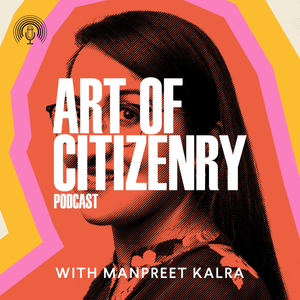
Exploring Intersectional Identities
One of the things I have found to be most impactful in my work is unpacking the complexity and layers to how we identify. No single person has a single identity. We are multidimensional, with each layer of our identity shaping how we see ourselves and hope to be seen.
It is not controversial to say that our identities are about more than just our race. And yet, when we think about representation, the web of experiences that shape our intersectional identities often melds together into one singular identifier of difference: race.
Representation cannot be about individual characteristics that make up any given person, it's about how those characteristics intersect and influence a person's experiences. This is why concepts like intersectionality, which was coined in 1989 by Kimberlé Williams Crenshaw are important, which essentially looks at how multiple forms of inequality or disadvantage compound themselves.
Our advantages and disadvantages as we navigate an unequal world change, they are fluid and shift as the circumstances around us change. And so, our experiences are a result of a hierarchy of factors that influence the privileges and oppressions that we encounter. Privileges and oppressions compound each other, influencing how they shape our experiences.
Let me share a story...
While in school, my husband traveled to Cuba for a medical education trip. At the immigration counter, the person on the other end was confused by him. Before him stood a brown man with a beard wearing a turban who appeared to be Indian, but was born in Canada, was an American citizen with an American passport, and spoke fluent Spanish without a hint of a distorting American accent. The officer stood confused, eventually summoning a second officer to verify everything was up to snuff. In that moment, why it took longer for my husband to pass through screening cannot be pinpointed to any one aspect of his identity. Sure, some factors, like race in many cases, weigh heavier than others, but the way these aspects of our identity intersect and sometimes contradict each other requires nuance that many of us fail to recognize when talking about representation. We are more than any one aspect of our identity.
Over the past few months, conversations around representation have become a core response for businesses on how they plan to foster a more anti-racist culture within the work place. Across industries, representation has become all about putting more black bodies in front of the camera and in Instagram feeds. Which, don't get me wrong, is fantastic, but this approach to representation can be hollow and easily falls short.
Representation normalizes difference and builds up those who are otherwise left unheard and unseen. Brands need to recognize that their marketing and branding should not just show what their current customer base looks like, but rather strive to represent the customer base they hope to have, one built on inclusion, not exclusion.
Representation + Black Lives Matter
Racism has historically and continues to fuel the way we navigate difference. It is reinforced by the systems and policies we navigate. These differences are what define how others see us, what boxes we are put in.
What happened with Breonna Taylor and her case, represents our current climate, it represents a lack of value for black and brown lives. It represents a lack of caring.
Chloe Jackman
One of the things I have noticed over the last few months is an increase in representation of black bodies in brand marketing, especially on social media. I remember right after the murder of George Floyd, brands started to post photos and run ads with black models on Instagram. It is amazing to have more people of color in front of the camera, but we must be cautious not to fall into the realm of tokenism and performative allyship.
If you are really trying to make change, if this is something you really want to. do, what are you doing on the backend? What are you doing that nobody is going to give you a pat on the back or high five for? What are you doing that is not front facing or forward facing to the world? What are you doing to work on yourself, and your business and challenge your ideas of racism because we all got them...For me representation in the world of social media especially goes deeper than. what. you see on the surface. I want to. know you are doing the work behind. the. scenes. - Chloe Jackman
At this moment in history, it is in vogue to have people of color in your marketing, but that must be intrinsically tied to doing the work of unpacking power...
10/01/20 • 34 min
Generate a badge
Get a badge for your website that links back to this episode
<a href="https://goodpods.com/podcasts/art-of-citizenry-178544/episode-07-representation-or-tokenism-15174869"> <img src="https://storage.googleapis.com/goodpods-images-bucket/badges/generic-badge-1.svg" alt="listen to episode 07: representation or tokenism? on goodpods" style="width: 225px" /> </a>
Copy